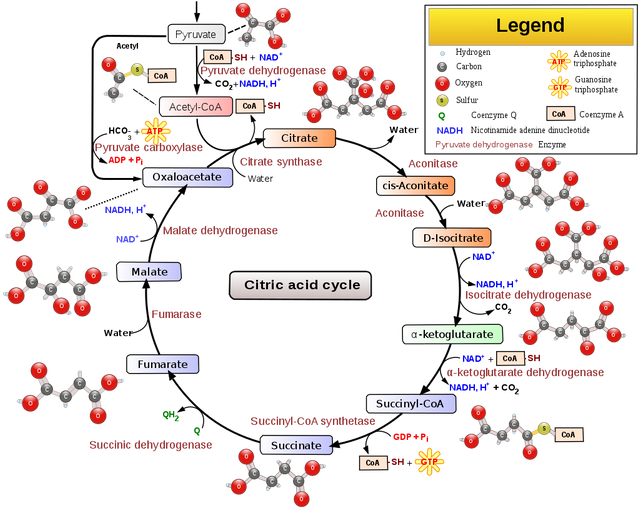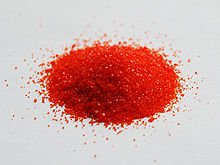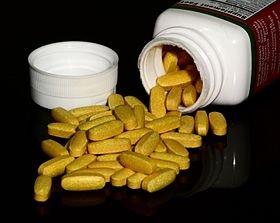Why our diets are important for sleeping
As Anthelme Brillat-Savarin wrote in 1826:
"Dis-moi ce que tu manges, je te dirai ce que tu es."
or roughly translated:
“You are what you eat.”
Our body can be regarded as a highly complex machine that burns fuel derived from our diets. In the science of physiology there is a simple premise that is used to investigate the influence of specific foods on our bodies:
The premise is as follows:
- If the body has what it needs, it functions optimally
- If it does not have what it needs, it breaks down
Given this premise, it is in our best interest to find out what the body needs to function optimally. Optimal functioning is called homeostasis. Homeostasis can be seen as the physiological boundary conditions, or the absolute necessities for the proper functioning of the body. Homeostasis is maintained by the bodies metabolism.
Our metabolism is an umbrella term for all processes that are perpetually going on in the human body to maintain homeostasis and keep us alive. Our body needs a lot of things to keep us alive: water, carbon and oxygen are the fundamentals, but there is much more, countless of enzymes, proteins and sugars, proper temperature for cells, ADP and ATP. It is too much to list it all.
Nevertheless, we can look at a single metabolic process that is relevant for a good night’s sleep and it is my aim to educate you about it.
The metabolic processes behind sleep
We know that bad sleep modulates diet. When people have not slept well, they tend to behave differently. For example, they are drowsy, perhaps even grumpy and cannot pay as much attention. These behavioral changes go hand in hand with specific physiological changes that are associated with weight gain. This is also expressed behaviorally, for example, people who sleep badly are more likely to give in to hedonistic pleasure (guilty pleasures, like eating a muffin for lunch) instead of homeostatic choices (like eating a salad for lunch).
Reference: Chaput, J. P. (2014). Sleep patterns, diet quality and energy balance. Physiology & behavior, 134, 86-91.
Chaput, J. P., Després, J. P., Bouchard, C., & Tremblay, A. (2008). The association between sleep duration and weight gain in adults: a 6-year prospective study from the Quebec Family Study. Sleep, 31(4), 517-523.
Science has - without a doubt - established that bad sleep leads to weight gain and that good sleep can support weight loss, but is it also the other way around?

Well, that is a classic chicken and egg problem…
Bad sleep leads to bad diet, but does bad diet also lead to bad sleep?
The Metabolism
To answer the question about bad diet leading to bad sleep we need to learn about our metabolism.
Our metabolism produces and uses energy to maintain homeostasis. Homeostasis is are the boundary conditions for life.
We can imagine that Homeostasis is a range of possible states in which life can exist. Outside of that range no life can exist.
For example, the amount of oxygen needed by the cells of our bodies is a range. If there is too much oxygen cells die, if there is too little oxygen cells die. Therefore, our bodies work very hard to keep oxygen levels in the proper homeostatic range. The same applies to various other physiological measures like blood pressure, blood cell count, etc.
The energy that the metabolism produces and uses to maintain homeostasis manifests itself in electrical current. Those currents can be measured in laboratories that have access to EEGs and fMRIs. At the University where I work we use EEGs to conduct research on sleeping people. In our sleep and cognition lab we investigate sleeping problems, cognitive processes that occur during sleep, and the physiology of sleep.
The Krebs-Cycle

The Krebs-Cycle is a very complicated metabolic process that helps the body to generate ATP. ATP is a molecule that can store excess energy and transport it elsewhere. ATP is the main fuel for most of the bodies processes. ATP provides energy to a lot of processes in the body, for example it is involved in DNA multiplication, but it is also involved in sleep.
For example, the electrical energy contained in ATP is also used to charge brain cells. Brain cells need electro-chemical gradient to communicate with one another and those electro-chemical gradients are established with the help of ATP.
Cells, neurons and sleep
Another name for electro-chemical gradients is action potential and they are a really important. We can measure resting potentials of cells when we use an electrode on them to determine their resting state. When a cell at its resting potential it means that the cell is ready to ‘fire a signal’ when it needs to. Once the cell fires it depolarizes quickly and needs to recharge before it can fire again. A cell is fully recharged when it reaches it's resting potential.
We say that 'when cells fire together, they wire together', meaning that cells that respond to similar stimuli usually fire at the same time. Over time, this process leads to the organization of cells into different specialized areas. Nerve cells are a special type of cell we call neurons. Neurons are organized in different areas of the brain that we call nuclei and cortices.
There are many different brain areas, but there is one brain area for everything that you can do. One area only fires when you speak, another only you touch your left finger and another only when we move our right foot.
When many cells fire at the same time in response to stimulation they create a small electric signal that we can pick up on an EEG. The EEG cannot measure the activity of a single cell, but it can measure the activity of many cells in conjunction with one another. This is how we study sleep.
How neuron prepare to fire and wire
All of this, would not be possible without ATP and ATPASE enzymes. ATPASE enzymes prepare neurons to do their jobs and they use ATP in the process, hence their name. Chemically, ATPASE enzymes are catalysts for chemical reactions that involve ATP, ADP or phosphate. A catalyst increases the speed at which specific chemical reactions occur. ATPASE enzymes are almost always proteins that have a specific job assigned in a cell. In neurons the job of the ATPASE enzymes is to pump specific atoms into the neuron, while pumping other atoms out of the neuron to establish the resting potential.
That means that ATPASE enzymes are critical for proper cell functioning.
A typical ATPASE reaction will look like this:
ATP + H20 + 3 NA+(inside) + 2 CA++(outside)
ADP + Phosphate + 3 NA+(outside) + 2 CA++(inside)
In other words sodium ions from the inside of the cell are pumped to the outside, while calcium ions from the outside of the cell are pumped to the inside of the cell.
Why does this relate to sleep?
The body can only induce sleep, if the neurons that induce sleep are able to fire a signal. These cells can only fire a signal when their ATPASE enzymes have enough ATP to do their job and when there are enough sodium and calcium ions available to create a resting potential so that the brain cell can fire and make us tired.
Our body is an amazing machine
If you are as fascinated by this then me, you will probably also enjoy to learn this.
Not only does our ability to sleep well depend on the neurons firing and doing their job, it also depends on the building blocks of life which are water (hydrogen and oxygen, H20), carbon and oxygen. The building blocks of life are known as organic elements and are part of organic chemistry.
Why are the three organic elements: hydrogen, carbon and oxygen so important?
Well, that is because water (H20) is the perfect insulator. In nature, there is no better insulator than (distilled) water because it cannot carry electrical charges. Water can only conduct electricity when other materials are dissolved in it. In fact, all organic chemicals are bad conductors of electricity, but more on that in a little while.
Carbon is the most stable element in the Universe and has excellent endothermic properties which means that it is excellent at absorbing additional energy.
Oxygen is a highly volatile and reactive molecule and has excellent exothermic properties which means that it is excellent at releasing energy.
Together, hydrogen (in the form of water), carbon and oxygen are the foundation for the organic chemistry of our body. They are crucial components of all living beings because they provide an environment with stable energy absorbing atoms, highly reactive energy releasing atoms inside an environment that is perfectly insulated so that little energy is lost in the reactions.
How can we measure electricity if our body cannot conduct it?
If you wonder why our body can transfer electric energy between cells, even though it is organic and should not be able to conduct electricity very well I have the answer for you.
As I said organic compounds cannot carry electric charges very well, but anorganic compounds can.
An organic compound is anything that is not a metal.
The list of all organic matter is:
- hydrogen
- oxygen
- carbon
- halogens
- noble gases
- nitrogen
- phosphate
- sulfur
- selenium.
Everything that is not on that list is anorganic and all anorganic compounds are metals.
Salts

The human body does not assimilate pure metals, but it does assimilate salts.
A salt is any combination of organic and anorganic compound, that means a salt is any combination of organic element and metal element.
The body’s metabolism uses many different salts for many different metabolic processes. Because of their unique composition salt can conduct electricity along cells and within cells. They can interact with the various organic components of the cell membrane and cell organelles because they are partially organic, yet they can carry excess electric energy with them because they are partly metal.
Specific Salts and specific roles
Salts are critical to the body’s metabolism and in the maintenance of homeostasis (life).
- For example: calcium-phosphate is a crucial component of the Krebs Cycle and energy gain.
- Ferrum-Phosphate is responsible to carry oxygen to your cells and lastly
- Sodium-Chloride is responsible to manages the water content of cells.
As you can see all of these salts have a role to play in our body and missing some of them in your diet can lead to very predictable problems and diseases in the long run. Your body can only store a certain amount of mineral in its tissue before it begins to run low and at that time you have to eat more foods containing the minerals you restore your body to full health.
The discovery of Vitamins and its link to Salts
This discovery is credited to Frederick Gowland Hopkins who discovered Vitamin A (vita = vitalis, min = mineral, roughly vital or essential mineral in English). Though there were some pioneers in his field before him, he received the Nobel Price in 1927 for his discovery of Vitamin A with two other researchers.
All Vitamins are salts. For example, Vitamin C is also called Sodium Ascorbate (it contains the metal sodium and the organic compounds oxygen and hydrogen). If we do not have enough Vitamins, then we will encounter specific problems sooner or later. When we are Vitamin C deficiency we will develop Scorbut, an auto-immune disease.
Why Vitamin deficiency leads to disease (and other problems)
When we do not have enough vitamins there are predictable diseases that can occur in the body:
- If you do not have enough calcium-phosphate your cells break down because they cannot generate ATP in the Krebs cycle
- If you do not have enough Ferrum-Phospate your cells break down because they do not receive oxygen to release energy from sugar, we call this anemia
- If you do not have Sodium-Chloride your cells will break down because they cannot hold water and dry out.
As you can see salts, or Vitamins, are really important for the maintenance of good health.
The role of Vitamins in sleep

The same rule would apply for sleep.
If you cannot sleep very well, it is possible that your lack of sleep is caused by the absence of a crucial vitamin.
There are a bunch of Vitamins that are involved in sleep and its regulation.
For example, if you do not have calcium-phosphate, the ATPASE enzymes that pump calcium into cells cannot pump calcium into cells. Therefore, the cell cannot establish its resting potential and therefore, the cell cannot fire when it needs to send a signal to other cells. For example, a cell that stabilizes your sleep by suppressing the activity of cells that could wake you up.
Calcium and Sleep
Calcium ions seem to be crucial for sleep. There are other ions involved in sleep processes but calcium seems to be the most important of them all and is involved in multiple changes that occur when we transition from wakefulness to sleep.
There are many different types of ATPASE enzymes (for example, t-type channels, p-type channels and N-channels) that use different types of calcium (for example, citrate malate, tricalcium phosphate) so it get very complicated very quickly. Nevertheless, I’ll will try to give you some more tips before I end this article.
There are several different calcium ion channels that are relevant and ‘do’ different things. We know that calcium is causally involved in the sleep/wake cycle, sleep stabilizing, temperature regulation during sleep and muscle relaxation during sleep. All of those functions are important if you want to enjoy a good night's sleep which gives us reason to believe that proper calcium levels are really important for good sleep.
Calcium is pumped into the cells of the neurons that make up the brain areas that are involved in the regulation of sleep. Their task is to suppress other cells from firing so that we can remain asleep, but they also play a role in inducing sleep at the end of the day because they shut down certain brain areas so that we can relax. If we want these brain areas to induce sleep quickly and successfully we need to make sure that we have enough calcium in our diets.
The best calcium sources for sleep
Well, scientists argue a lot about that and there is some contradicting evidence. But according to my understanding the best bet are foods that contain calcium in salt form because they are most easily absorbed into the metabolism. The ideal sources of calcium seems to be greens (spinach, rucola, watercress, etc., as long as it is green leafs) because they contain citrate malate and tricalcium phosphate. Both of these are salts that are readily available in the cell metabolism. They are also absorbed exceptionally well by the human digestive system.
There are other sources of calcium like milk (lactate and lactose), but calcium from lactate is absorbed very poorly. Calcium from lactose on the other hand seems to be absorbed in moderate amount (up to 30%), but can cause problems when you are lactose intolerant. I also question that the calcium for lactose is readily available to your cells, because there might be a need for additional enzymes to help break lactose down before it can be used in the Krebs-cycle. Citrate-malate on the other hand is available to the cell metabolism instantaneously.

To make a long story short, it is probably beneficial to eat a salad with green leafs a couple of hours before sleep, perhaps lunch. If you suffer from regular sleeping problems like insomnia it could be related to a Vitamin deficiency. If you truly suffer from sleeping problem because of too little calcium you should see improvements within a week after adopting some calcium containing foods to your diet. However, there are many other potential reasons that can make it difficult to fall asleep and if more calcium does not solve your problem you should seek a doctor to treat you.
Proper sleep is crucial for good health.
If you want to, I can write a scientific article about that in the future.
References
Anderson, M. P., Mochizuki, T., Xie, J., Fischler, W., Manger, J. P., Talley, E. M., ... & Tonegawa, S. (2005). Thalamic Cav3. 1 T-type Ca2+ channel plays a crucial role in stabilizing sleep. Proceedings of the National Academy of Sciences of the United States of America, 102(5), 1743-1748.
Bertolino, M., & Llinas, R. R. (1992). The central role of voltage-activated and receptor-operated calcium channels in neuronal cells. Annual review of pharmacology and toxicology, 32(1), 399-421.
Boanini, E., Gazzano, M., & Bigi, A. (2010). Ionic substitutions in calcium phosphates synthesized at low temperature. Acta biomaterialia, 6(6), 1882-1894.
Chaput, J. P. (2014). Sleep patterns, diet quality and energy balance. Physiology & behavior, 134, 86-91.
Chaput, J. P., Després, J. P., Bouchard, C., & Tremblay, A. (2008). The association between sleep duration and
weight gain in adults: a 6-year prospective study from the Quebec Family Study. Sleep, 31(4), 517-523.
Guéguen, L., & Pointillart, A. (2000). The bioavailability of dietary calcium. Journal of the American College of Nutrition, 19(sup2), 119S-136S.
Kim, Y. S., Kim, K. M., Lee, D. J., Kim, B. T., Park, S. B., Cho, D. Y., ... & Joo, N. S. (2011). Women with fibromyalgia have lower levels of calcium, magnesium, iron and manganese in hair mineral analysis. Journal of Korean medical science, 26(10), 1253-1257.
Lee, J., Kim, D., & Shin, H. S. (2004). Lack of delta waves and sleep disturbances during non-rapid eye movement sleep in mice lacking α1G-subunit of T-type calcium channels. Proceedings of the National Academy of Sciences, 101(52), 18195-18199.
Myers, R. D., & Veale, W. L. (1971). The role of sodium and calcium ions in the hypothalamus in the control of body temperature of the unanaesthetized cat. The Journal of physiology, 212(2), 411-430.
Obal Jr, F., & Krueger, J. M. (2003). Biochemical regulation of non-rapid-eye-movement sleep. Front Biosci, 8(1), d520-550.
Peuhkuri, K., Sihvola, N., & Korpela, R. (2012). Diet promotes sleep duration and quality. Nutrition research, 32(5), 309-319.
Phillips, F., Crisp, A. H., McGuinness, B., Kalucy, E. C., Chen, C. N., Koval, J., ... & Lacey, J. H. (1975). Isocaloric diet changes and electroencephalographic sleep. The Lancet, 306(7938), 723-725.
